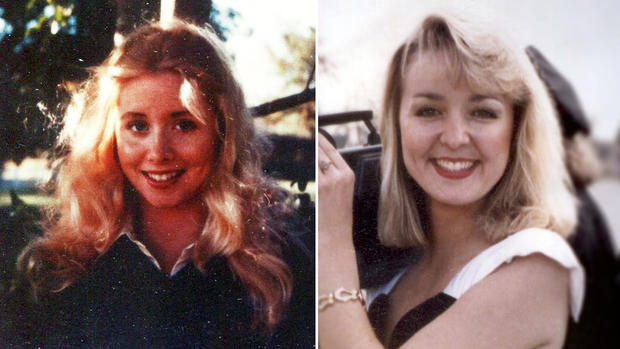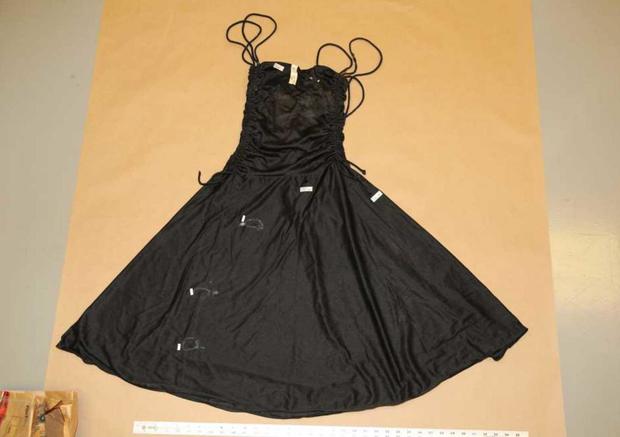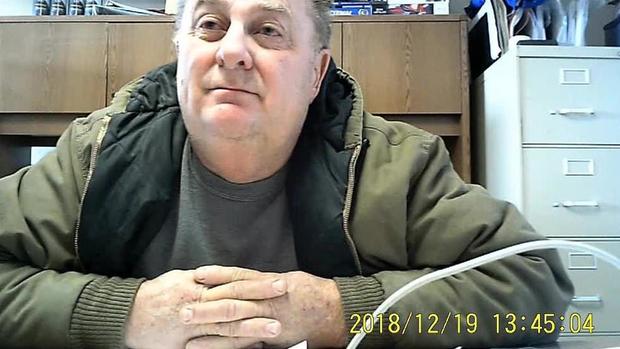In late June of 1995, Jodi Huisentruit, a young anchor at KIMT television in Mason City, Iowa, disappeared from the parking lot of her apartment building on the way to work, never to be seen again. The case got nationwide media attention but has remained an unsolved mystery for the past 25 years.
Now, the solving of another long-cold case—a young blonde woman murdered in Cedar Rapids, Iowa, two hours away may shed new light on Huisentruit’s disappearance and presumed murder.
The murder of Michelle Martinko in the parking lot of Cedar Rapids’ Westdale Mall has some eerie connections to the Huisentruit case. And the crucial link is a man named Jerry Burns. “Murder at the Mall: The Michelle Martinko Case,” reported by “48 Hours” contributor Jamie Yuccas, airs on Saturday, November 7 at 10/9c on CBS.
Martinko was 18, a senior in high school in 1979, when she was accosted as she was getting into her car on a chilly night in December following a trip to the mall. A struggle followed in which Michelle was stabbed and sliced by a knife almost 30 times in a horrific murder that police initially believed had to be a crime of passion.
“It looks personal, it’s a lot of stab wounds, it’s overkill,” said lead Detective Matt Denlinger of the Cedar Rapids Police Department. “It’s always the boyfriend, the girlfriend, the husband — someone really close to the person.”
Whoever the killer was, he had come prepared. Police found impressions from rubber gloves inside and outside the car, indicating that the assailant had likely planned his attack and hoped to escape unidentified
Denlinger took over the case in 2015, part of a second generation of cops who had struggled for decades to solve this seemingly unsolvable murder. In fact, his father Harvey, now 85, had been one of the original officers on the case 40 years earlier. But detectives had been stymied. They had investigated more than 100 people over the years, and all were dead ends.
What began to turn the case around was the emergence of DNA as a forensic tool for crime fighting in the late 1990s. The primary evidence police had to go on was blood on Michelle’s dress and on the car’s gearshift that in 2005 was finally identified as male DNA.
Police sent the blood samples to CODIS — the nationwide data base of DNA collected from arrested offenders — but didn’t get a hit. They then started to locate all the people that they had originally interviewed in the investigation and collected DNA samples from over 100 different people.
Denlinger had to consider that Michelle could have been murdered by a stranger. And he had the daunting task of trying to figure out who that could be, armed only with an unidentified sample of blood DNA.
After reading about the Golden State Killer case in 2018, in which serial killer Joseph James DeAngelo was finally caught through a long trail of DNA, Denlinger had an epiphany: perhaps he could use that same new technique to solve the Martinko case. “That was big, national news,” said Denlinger. “I read the article and it talked about genetic genealogy. And I went ‘bingo’.”
Denlinger began contacting genealogy companies for help in trying to find a family tree that could lead to the person whose DNA matched that found at the crime scene. He began working with Parabon NanoLabs, now a leading company helping police solve crimes through genetic tracing.
Through his research, he discovered that a woman named Brandy Jennings had uploaded her DNA to a website service to trace her own family history. It showed that she was a distant relative of the person whose DNA was found at the crime scene — a second cousin once removed. So Denlinger drew up an elaborate genealogy chart going back to Brandy’s great-great grandparents to sleuth out a trail that could lead to the killer’s DNA
After weeks pursuing a wide range of possible blood relatives, Parabon helped him narrow the search down to three middle-aged brothers in Iowa who would have been young men back in 1979: Ken, Don and Jerry Burns. Denlinger followed each of the brothers around clandestinely, waiting for them to discard an item containing their DNA, and then sent the collected samples to the crime lab. Ken and Don were not a match — but Jerry Burns’ DNA was a match, to an almost perfect scientific certainty. Denlinger had found the needle in the haystack.
“I was speechless,” Denlinger says, recalling the moment the lab told him the results.
Subsequently he interviewed Jerry Burns, who denied knowing or ever meeting Michelle Martinko. But the jury found the DNA connection convincing and after a nine-day trial, Burns was convicted of first-degree murder. The case was solved, but there were lingering questions about Jerry Burns.
Police had searched his computer after arresting him, and found a history of searches pertaining to nefarious subjects including the murder of blonde women, and pornographic matter involving blonde women. This evidence was inadmissible at trial but was the subject of a public suppression hearing.
In his video interview with police right before his arrest, Burns, unsolicited, mentioned the name of Jodi Huisentruit as he was being questioned about the Martinko case. When Denlinger reminded Burns that Michelle had been killed in 1979, Burns responded, “It was a big deal. I don’t exactly remember what happened, seen something about Jodi Huisentruit recently.”
The similarities were eerie — two pretty, young women, both meeting their final fate in parking lots in Iowa, 16 years apart, in cases that went unsolved for decades.
There is no known DNA evidence tying Burns to the Huisentruit case and no evidence that he knew Jodi Huisentruit. Mason City police won’t disclose whether or not they are now looking at Jerry Burns as a suspect in that case.
Could Jerry Burns have committed murders other than Michelle Martinko’s? When asked that question by “48 Hours,” Denlinger replied, “I don’t know the answer to that. My gut tells me there’s probably something else out there.”




